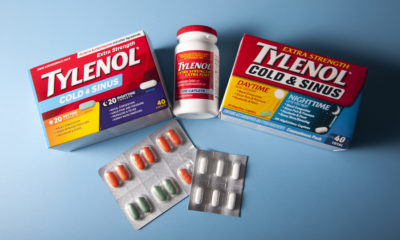Pregnancy can be hard on a woman’s body. As the body shifts to make room…
The FDA drug approval process is often at the center of criticism. Far too often, there are complaints that the agency’s approval process is too burdensome. But there is also discontent from those who say the organization doesn’t do enough to protect the American public from dangerous drugs. Whether it’s issuing a recall after learning of harmful side effects of a drug or determining if a new drug is fit for approval, the FDA plays the most important role in both prescription and over-the-counter drug U.S. market availability.
What is the FDA?
The United States Food and Drug Administration (FDA) is a federal executive department that oversees the American public’s health. The U.S. Congress empowered the FDA in 1938 with the Federal Food, Drug and Cosmetic Act. The agency is responsible for the safety, efficacy, and security of several items including:
- Human and veterinary prescription and over-the-counter drugs
- Dietary supplements
- Biological products
- Medical devices
- Food
- Cosmetics
- Products that emit radiation
The FDA is also responsible for regulating the manufacturing, marketing, and distribution of tobacco products to protect the general public health and reduce youth tobacco use. While the FDA champions itself as the protector of public health, the organization sometimes fails to act in the best interest of the public. The agency is often slow to initiate a recall of a dangerous drug or product. Further, the agency is only loosely involved in the testing of drugs during the drug approval process—only periodically sending investigators and reviewing results from drug sponsor testing.
Drug Approval Process
The FDA must approve new drug compounds before drug companies can market or sell the drug in the U.S. However, the FDA isn’t responsible for developing drugs, nor does the organization conduct any testing. In reality, the only role the FDA has in the testing of drugs is reviewing data drug sponsors gather and submit. To get a new drug or altered drug on the market, drug sponsors have to go through several steps.
Step 1: Animal testing
The first step is animal testing. All drug manufacturing companies must test new drugs on animals for toxicity. These tests are conducted across multiple species. These tests gather basic information on the safety and efficacy of the compound.
Step 2: Investigation New Drug Application
The second step in the drug approval process is the sponsor submits an investigational new drug (IND) application to the FDA. Submission on this application is based on the results of initial testing of the drug. The application will contain information on the drug’s composition, manufacture and develops a plan for testing the drug on humans. When the FDA reviews the IND it will assure that the proposed clinical trials do not place human subjects at an unreasonable risk for harm.
Step 3: Phase 1
During phase one of the drug approval process, the emphasis is on the drug’s safety. The company tests the drug on between 20 and 80 healthy volunteers. During this phase, the focus is primarily on the drug’s most frequent side effects and how the drug is metabolized and excreted.
Step 4: Phase 2
There are 100s of patients in this phase of the testing process. This phase emphasises effectiveness. The drug is tested on people who have the disease or condition the drug is intended to treat. In controlled trials, patients receiving the drug are compared with similar patients receiving a different treatment. In some cases it’s a placebo, in others it’s a different drug used to treat the same condition. At the end of this phase, the FDA and sponsors will discuss how large-scale studies will be conducted in Phase 3.
Step 5: Phase 3
This phase involves the testing of thousands of patients. These studies gather more information about safety and effectiveness, study different populations, different dosages and use the drug in combination with other drugs.
Step 6: Review Meeting
The FDA will meet the drug sponsor prior to submission of a new drug application.
Step 7: New Drug Application
During this step of the drug approval process, the drug sponsor will formally ask the FDA to approve a drug for marketing in the U.S. by submitting an NDA. The new drug application includes all animal and human data and an analysis of the data. The application will also include how the drug behaves in the body and the manufacturing process. The actual approval process of a drug begins at this stage.
Step 8: Application Reviewed
Once the FDA receives the new drug application, the agency then has 60 days to decide whether to file the application to begin the review process.
Step 9: Review Team Assigned
If the FDA files the NDA, the administration will assign a team to evaluate the sponsor’s research on the drug’s safety and effectiveness.
Step 10: Drug Labeling
The FDA will review the drug’s professional labeling. During this stage in the drug approval process, the organization will communicate all appropriate information to healthcare professionals and consumers.
Step 11: Facility Inspection
The FDA sends a team out to inspect the drug’s manufacturing facility or facilities.
Step 12: FDA Decides
This is the final stage in the review process. At this point, the FDA will either approve the application or issue a response letter to the drug sponsor.
FDA Evaluation Teams
Center for Drug Evaluation and Research (CDER)
The FDA’s Center for Drug Evaluation and Research (CDER) team is responsible for evaluating new drugs before they reach the U.S. market. Physicians, statisticians, chemists, pharmacologist, and other scientists make up the CDER team. The team reviews the drug sponsor’s data and proposed labeling of drugs.
Division of Scientific Investigations
Because the FDA does not conduct its own testing, it sends out a team of clinical investigators from the Division of Scientific Investigations (DSI) to conduct inspections of drug study sites. The DSI team evaluates and verifies the quality and integrity of data submitted. The team determines:
- If the study meets criteria specified in the investigation plan
- All adverse events were recorded
- Whether or not the subjects met the inclusion or exclusion criteria outlined in the study protocol
At the end of every inspection, DSI investigators will prepare a report summarizing any deficiencies.
In some cases, investigators may observe numerous or extreme deviations. When this occurs, the DSI classifies the inspection as “official action indicated” and will send a warning letter or Notice of Initiation of Disqualification Proceedings and Opportunity to Explain. The letter will specify the deviations found. Once this letter is sent, it will begin an administrative process to determine whether the clinical investigator should remain eligible to receive investigational products and conduct clinical studies.
The FDA reports that of the 300-400 clinical investigator inspections conducted annually, about 3 percent are classified in the official action indicated category.
What does an FDA Approval Mean?
In the final stage of the drug approval process, the FDA will determine whether or not a drug meets the approval criteria. To receive approval, the FDA must conclude that the benefits outweigh the known risks. Once approved, the company can begin marketing and selling the product in the United States.
FDA approval does not mean that a drug is perfectly safe. In fact, all drugs that affect the body will have some side effect. Each person’s body will react differently to the drugs. Some may have unrecognizable side effects; while others may begin experiencing a side effect they were not warned of. The FDA’s website states that side effects of the drugs it approves “are generally not serious.” However, the FDA has no real way of knowing this.
What is FDA Accelerated Approval?
A new drug receives accelerated approval if it fills a need to treat serious or life-threatening illnesses that lack effective treatments. While the traditional FDA drug approval process requires proving a clinical benefit before approval will be granted, some drugs are given accelerated approval. Essentially, this allows approval for a new drug before the FDA measures the effectiveness of the drug.
Instead of clinical trials, less traditional measures called surrogate endpoints evaluate effectiveness. These are simply laboratory findings or signs that may not measure directly how a patient feels, functions or survives. However, these findings focus on predicting the benefits of the drug. Upon receiving accelerated approval, the FDA will continue to monitor the drug through a postmarketing surveillance program.
What does an FDA Delay or Denial Mean?
In some cases, at the end of the drug approval process instead of approval, the FDA issues a response letter. The response letter does not necessarily mean that the new drug will not receive approval in the long run. However, it does mean that the administration wants or needs more information on the drug before it will approve it for U.S. sale and marketing.
Common issues that can prompt an FDA new drug denial include:
- Failure to demonstrate effectiveness. If this is the issue, then the FDA may require the drug sponsor to conduct additional studies in more people, different types of people or for a longer period of time.
- Manufacturing issues. As part of the approval process, the FDA will inspect the facility responsible for manufacturing the drug. Drug companies must follow good drug manufacturing practices. If the manufacturing facility isn’t ready, then the FDA will delay approval. If investigators find deficiencies then drug manufacturers will need to correct them before the FDA will approve the drug.
- Quality issues. When drug companies begin to scale up their drug supply for wide-market release, they may end up with quality control issues. These issues can result in different chemistry than what the drug sponsor submitted to the FDA. Drug companies must show that a drug will remain consistent during manufacturing as in the testing stages. Quality issues will result in a delay until the issue is fixed or denial if the issue cannot be fixed.
In the FDA’s response letter, it will outline the reasons why a drug was denied. CDER gives the sponsor a chance to meet with FDA officials to discuss deficiencies. At this point, a sponsor can request a hearing, correct any deficiencies and submit new information, or withdraw the application.
Reporting Adverse Events to the FDA
It is impossible to predict all of a drug’s effects during clinical trials. However, monitoring the safety of a drug on the market is a critical part of the drug approval process. It is especially important when it comes to protecting the health and safety of the general public. It is only while on the market that all of a drug’s side effects become apparent. Because of this, once a drug is on the market, the FDA’s new role is to detect serious or unexpected adverse events. The FDA has a responsibility to take action when drugs present harmful side effects in patients. Usually, the FDA requires the drug manufacturer, or drug sponsor, to submit periodic safety updates.
FDA Adverse Event Reporting System (FAERS)
The FDA Adverse Event Reporting System (FAERS) is a computerized informational database that supports the FDA’s postmarketing safety surveillance program. FAERS houses information on all approved drug and therapeutic biologic products. Multidisciplinary safety evaluators, epidemiologists and other scientists in the CDER evaluate reports in FAERS to detect and monitor drug safety.
The FDA may take regulatory actions to improve product safety and protect public health. For example, the FDA may update a product’s label, send out a “Dear Health Care Professional” letter or re-evaluate an approval.
MedWatch
MedWatch is the FDA’s reporting system that patients and physicians can use to report adverse events in drugs on the market. The FDA unveiled the system in 1993 and relies on voluntary reporting to obtain information. The FDA uses information collected through MedWatch to issue safety alerts.
MedWatch includes publicly available databases and an online analysis tool for professionals. It is also a useful tool to disseminate product safety alerts, such as recalls and other clinical safety communications. The system has adapted to the times and can communicate via its website, email list, Twitter and RSS feed.
The Carlson Law Firm Handles Dangerous Drug Cases
The FDA’s drug approval process does not mean that a drug is safe. In fact, thousands of people experience adverse drug effects after FDA approval every year. If you or a loved one has suffered serious or fatal injuries as a result of dangerous drugs prescribed to you or sold over the counter, it is important to know that you have legal rights. You can take action against the pharmaceutical company that misrepresented the dangerous side effects of the product it sells to unsuspecting patients. A defective or dangerous drug attorney from The Carlson Law Firm is ready to evaluate the facts of your case.
Contact a dangerous drug attorney from The Carlson Law Firm for a free consultation with an experienced personal injury attorney. We serve injured client nationwide. No appointment is necessary. We have bilingual staff members available to assist our Spanish-speaking clients. Hablamos su idioma.
Find a dangerous drug attorney near me.



